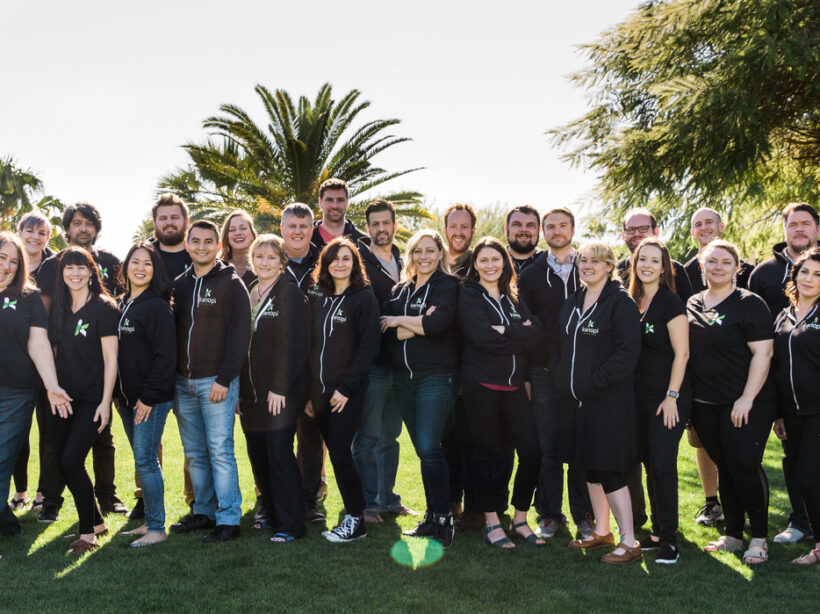We’ve all heard it: content is king. But anyone who’s tried to audit their content — much less get a full handle on it — has come to understand how big of a call that is. Your content makes you relatable to users as you guide them through their journey (with the goal of conversion) while also communicating the value of your content to search engines too. Your content needs to entice the new visitors that you want to attract, gently suggest to your non-target market that this content is not for them, all while delighting returning users again and again. It’s a lot!
So, instead of taking on the word, or your content all at once, let’s look at the 3 content strategy improvements you can make now to optimize this incredible asset.
“Success is making those who believed in you look brilliant.”
Hubspot
Define & Track Success
Until you know what it looks like for a user to convert, you’ll never celebrate an accurate conversion rate. Define your macro and micro conversions. What do you want your readers to do with your content? Is there a form you want them to fill out, or a way you want them to engage?
To continue winning the internet marketing game, your content has to be more than just brilliant — it has to give the people consuming that content the ability to become a better version of themselves.”
Michelle StinsonRoss, Managing Director of Marketing Operations, Apogee Results on Hubspot
The key to all content marketing is to make the end-user the protagonist — the hero of their own story. Before they can strap on that cape and tights they need a goal, which is that point when they convert. Clearly define what your users need to do to be their own hero. Some common conversions are:
- contact form submitted
- donation made
- chat engagement
- responded to an ad or social media engagement
- download gated content
- video watched to completion
- blog article read to completion
Once that’s done, track it. Utilize Google Analytics’ goals, events, and functions. Build funnels and review the behavioral flow. See where users are coming from, and where they are going. If you have the option, optimize a tool like SEM Rush to see how your search engine rankings for keywords and phrases measure up to your competition. Set yourself up for success to not only say your users are making a difference, but to demonstrate how well you’ve accomplished this.
Navigation
Ok great work! You now know what success looks like. Time to break out the map to get them there. I know, we don’t typically envision Superman stopping up in the clouds, pulling out his phone and looking up an address on Google Maps, but our heroes need a bit more help than he does. Simply put, your navigation is there to help the user along their journey from point A to point B. So… how clear are your pathways?
Often, even the best-maintained sites suffer from sprawl; content is added in a hurry and different teams are updating all the information as regularly as possible. The problem is, over time this can blur the steps a user will take to get where they’re going. Navigation dropdowns can collect 10 or more links and users are so overwhelmed with choices they often just click anything, which isn’t the best way to move them towards their goal. So let’s break down a few basic rules to apply to your navigation:
- Try to keep it limited to about 4-5 options per navigation: this includes your main nav, your hero nav, and each dropdown. Perhaps the only exception would be your footer, but even then, each column should only include 4-5 options. Make it easy for your users. Either a path will lead them to your goal or it won’t.
- Use clear language: you don’t have long before an end-user gets frustrated and clicks anything (including the back button). Make the language consists and representative of the page. And remember: if your menu items are outputting your properly formatted page titles, these menu links will also be what shows up on search engine result pages,helping your hero get to you as well as move within your site.
- Make sure it’s accessible: this isn’t only for the 20% of self-identified disabled users out there, this is for everyone. From a poor internet connection to a cracked phone screen to a user who hasn’t had their coffee yet and is prone to ‘fat fingering it’ (The Thing was a hero too!) accessible menus make it easier for everyone.
Engaging Calls to Action (CTA)
“A strong CTA is far more than a combination of words that hopefully compels people to click on a button — it’s a powerful statement of intent, a rallying cry to our tribe, the crescendo of a rousing speech that leaves the audience exhilarated, clenched fists raised triumphantly to the sky. Well, that’s the idea, anyway.”
Dan Shewan, Wordstream
What if Commissioner Gordon never called Batman on his red phone, or the random person never yelled help as they point to the villain descending? The hero would never know where they were needed next. Your CTAs are the same thing: they show your user, the hero, where to go next to accomplish their goal.
Make them clear.
Make them engaging.
Direct to the next step.
And for accessibility purposes, don’t be vague. “Click here” doesn’t give tell a screen reader what the user will gain by clicking. Use words and directions that tell assistive technologies what clicking will accomplish.
A few great CTAs include:
- Get involved today!
- Make a difference in someone’s life.
- Start the conversation.
- Tell us what you think.
There is a lot more you can do with your content, but these are three critical steps you can take right now to make an impactful difference that will add value to your site. Think about it: you know your user, your company, and your goals. You’re already in the best possible position to help your users do more than visit your website, you’re empowered to make them the hero. Start with these three steps and verify how they are working. And if something isn’t working, just adjust and try again.
If at any point this starts to feel overwhelming, and we get it, you’ve already got a lot on your plate, just drop us a note and we’ll talk it through content strategy improvements. You’re the hero of our story and we’re happy to write that together.









